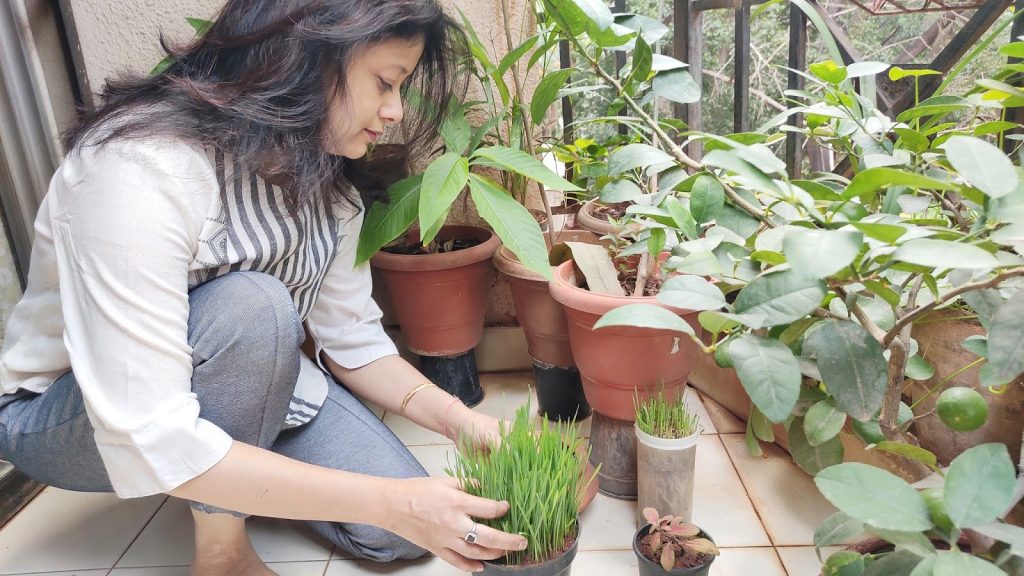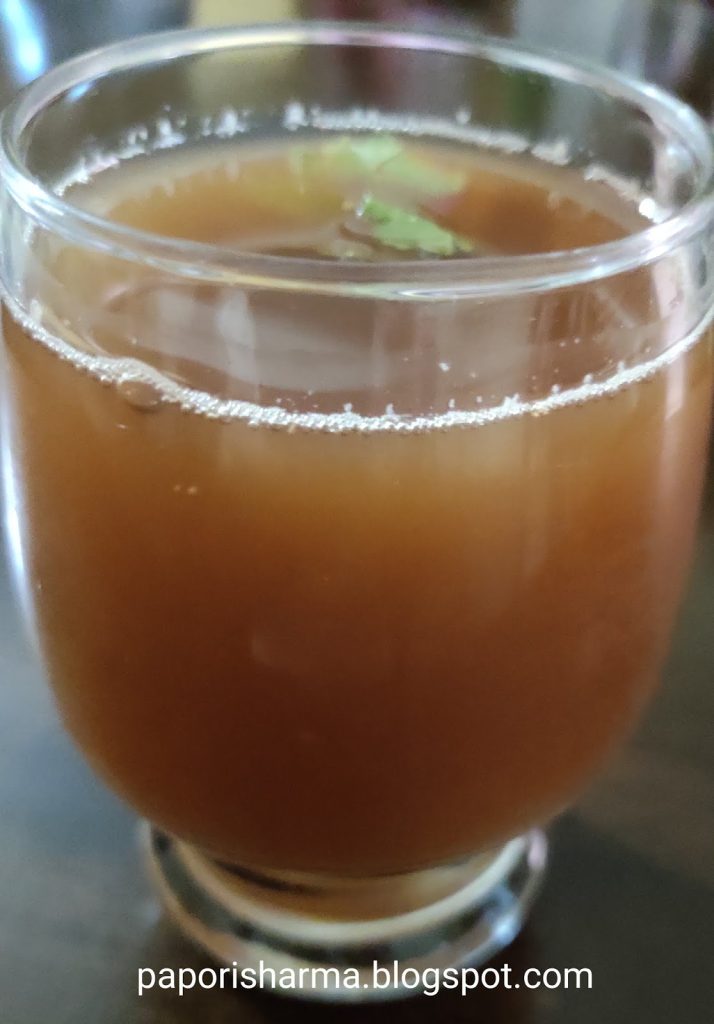
During these stressful times, with a pandemic raging outside, most are doing their level best to keep themselves safe and healthy. Along with physical distancing, building & maintaining a strong immune system is essential in staying resistant to disease.
One of the known ways to boost immunity is to take the help of Yoga. Another perhaps lesser-known way is to use a diet consisting of various herbs and medicinal plants found abundantly in nature.
I have always been a plant lover, ever since my grandmother worked her magic on our illnesses with freshly plucked medicinal herbs from the garden. This fascination with healing from nature further developed in an Ayurveda lesson while studying for my Postgraduate Diploma in Yoga Therapy. In fact, my interest grew so strong that I continued to vastly research the subject after my graduation 2 years later.
Thus, together with my knowledge from childhood and my experiences as a yoga therapist, I firmly believe that the consumption of such medicinal herbs and plants is a viable approach to building immunity without the need for external synthetic medicine. This is one of the easiest ways to build strong immunity and building your’s & your family’s immunity is in your hands.
So, I compiled a list of a few food items that will surely boost your immunity to a large extent.
Wheatgrass Juice


Wheatgrass is the young, freshly sprouted leaves of wheat kernels, containing high amounts of chlorophyll and amino acids, vitamins A, C, E and Iron, Calcium & Magnesium.
It helps in production of red blood cells in the body. The chemical composition of green color chlorophyll in wheatgrass juice is similar to that of haemoglobin. Our bodies freely convert chlorophyll into haemoglobin, resulting in an increase in the red blood cell (RBC) and there is more oxygen in red blood cell. This helps to protects the body from various bacterial & viral infections and from environmental pollutants; it also provides nutrients to the cells.
Rich source of chlorophyll in wheatgrass juice has a powerful anti- inflammatory properties and eliminates toxins by detoxifying.
Liquid chlorophyll washes drug deposits from the body.
Having a strong immune system can help you recover more quickly, if you get any illness.
Researchers found wheatgrass juice helps in treating cancer. When used alongside conventional cancer treatment like Chemotherapy, wheatgrass juice helps in boosting the immune system and in detoxifying the body.
It has high levels of antioxidant that helps in reducing free radical damage.
Try to grow your own wheatgrass. It’s very easy to grow at home.
Soak handful of wheat kernels for few hours (approx.8hrs.). Then spread the seeds in a pot /tray (with holes for draining) filled with thin layer of compost. Gently press soaked wheat kernels into soil, without covering completely. Soaking wheat kernels before, helps to grow faster. Water gently to moisten soil. Avoid overwatering. Fungus grows on over watering soil. Keep the pot/tray in indirect sunlight or in a place where there is a direct morning sunlight.
Harvest wheatgrass when it grows to 4-6 inches tall. Gently cut it with scissors. I soak harvested wheatgrass in salt water for 5mnts. and wash it properly, before juicing. If desired, let the grass grow for second harvest.


It is better to take wheatgrass juice in the morning in empty stomach. In empty stomach, wheatgrass juice gets absorbs quickly in the body, within 20 minutes.
People who are taking for the first time , should start with 1 ounce and gradually increase it to 4 ounces. You can start with once in a week initially and over time you can take thrice a week.
There is no harm if you are taking regularly also.
For some people allergic reactions might happen if you are allergic to grass.
There are possible side effects:
Nausea
Upset stomach
Headache
Constipation
These symptoms generally fade within 2 weeks, after your body has adjusted to the wheatgrass.
NOTE: Don’t take wheatgrass juice if you are pregnant or breast feeding.
2. Neem: Also known as “Azadirachta Indica”
In my childhood , my mom used to give us a few neem leaves to eat every sunday for lunch, from the month of Jan. to May because during this period the chances of getting sick was high due to seasonal change. It was easy to get viral fever or chicken pox especially because back then there was no vaccine for it. From June to rest of the year, mom made it once in a month.,
She would fry neem leaves in a spoonful of ghee and sprinkle a little salt on it. She would always serve a few crispy leaves (4 – 5) with a little bit of rice and this was the first thing we had to eat before having our lunch. She always made our favourite dishes on Sundays and since I was young and naive, I didn’t understand the point of eating something so bitter and pungent first. Time however, has proved that chewing neem leaves keeps gut safe and healthy and one of the best remedies for my immune system, even till today.
I now continue this practice with my children.
There are other ways to eat neem leaves too but this is the recipe I am familiar with since my childhood.

Eating bitter food before meal, stimulates liver to produce bile, which is an important part of optimal digestion. Bitter foods challenge the liver. They make it work and help it to remain healthy, just as muscles challenged by exercise function better. This leads to better absorption of nutrients and natural detoxification of the liver.
Neem leaves have anti – bacterial properties which is why it works on infection, destroys the bacteria that causes infections, boost immune system, purify blood, remove toxins, treat insect bites, prevent damage caused by free radicals in the body.
It lower the risk of many diseases — including cancer, heart disease, and diabetes.
I am sharing a few recipe links for Neem leaves.
https://www.tarladalal.com/Neem-Juice-42466r
https://food.ndtv.com/recipe-neem-chutney-954327
NOTE: Pregnant woman and a woman trying to conceive should not have neem. Consumption of neem produces, immense internal heat in the body.
3. Amla: ‘Indian gooseberries’. Also known as Phyllanthus emblica.
During the two months of summer vacation we (me & my brothers) used to get a long respite from school and we eagerly waited for this time the whole year around. It was the time to visit grandparent’s house in Assam. Even grandparents eagerly waited for us. Spending the entire summer vacation in grandparent’s house was customary in our times.
In Assam, every household, would have a garden in their backyard, growing variety of medicinal plants, vegetables, seasonal fruits and even betel nuts. There were a lot of seasonal citrus fruits that used to grow in Assam, but not available readily in other parts of the country. Amla is grown in Assam as well as available in other states abundantly.

Amla, this rich fruit loaded with vitamin c and antioxidant is always been in our diet on a regular basis. When we were kids while playing, we would simply pick amla from the ground in our backyard garden, give it a little rub on our clothes and then eat it. My mom had a few special recipes on amla which were (& still are) very healthy and delicious & which probably you won’t find on the internet. I am sharing a few such recipes below.
Recipe: 1. Amla with star fruit or carambola with 1 green chilli and few cloves (3 or 4) of garlic, salt and pinch of sugar. Coriander leaves also can be added. It’s optional. Grind it all together. A delicious and healthy chutney (paste) is ready.

2. Amla and starfruit juice with a spoon of honey. A simple and healthy drink.
NOTE: People with any kind of kidney disease should avoid star fruit.
3. Another simple and healthy drink — Amla – 4 nos, 1/2 inch ginger, sweeten with honey or jaggery. Here I have used jaggery. (The antibacterial effects of gingerol help in curing cold and sore throat).

4. Boil 1large potato, 1 red tomato or 2 small green tomato together. Separately boil 2 amla and take out the seed. Take a bunch of spinach and 1 green chilli, wash and chop it fine. Put all of them in large bowl. Add salt and 1/2 teaspoon of extra virgin olive oil or mustard oil. ( We Assamese people generally love aroma of mustard oil and pungent taste) Mix together and smash it well. The

Amla is an excellent source of Vitamin C, hence it helps to boost immunity, prevents viral and bacterial infections including cold and cough.
It has sweet, pungent and bitter flavours. Indian gooseberries are very rich source of iron and calcium also. It has a high fibre content which works wonderfully for the digestive system. It’s an effective cure for constipation.
It reduces acid level in the stomach and fights inflammation. It contains chromium which makes the body more responsive to insulin and regulates the blood glucose levels.
According to Ayurveda, Amla is one of the best tonics that helps to brighten the skin, purify blood and improve eyesight.
https://cookpad.com/in/search/amla link for few more recipes on Amla, few more ways to include Indian gooseberries in your diet.
NOTE: Indian gooseberry might increase the risk of bleeding or bruising in some people. If you have a bleeding disorder, use it with caution.
Indian gooseberry might increase the risk of bleeding during and after surgery. Stop taking Indian gooseberry at least 2 weeks before a scheduled surgery.
I will share a few more such foods in my next post.